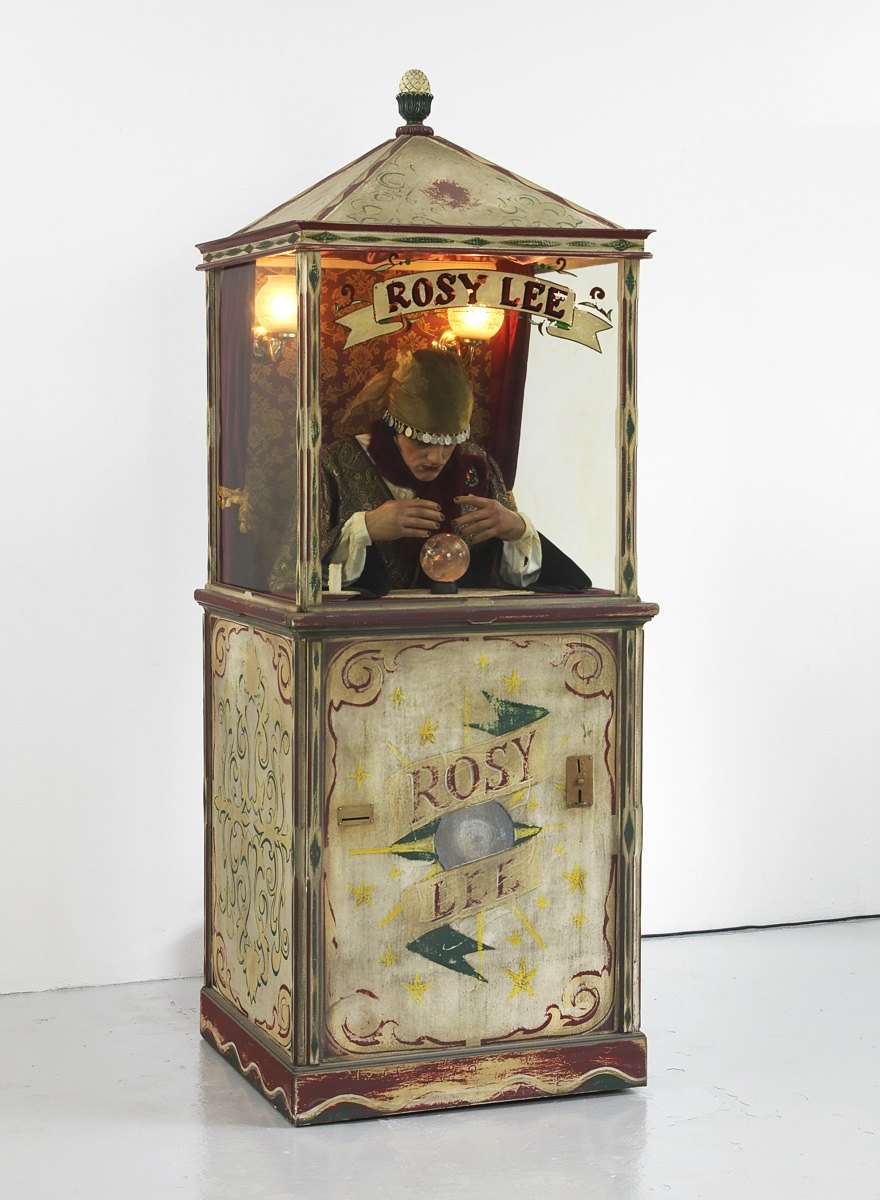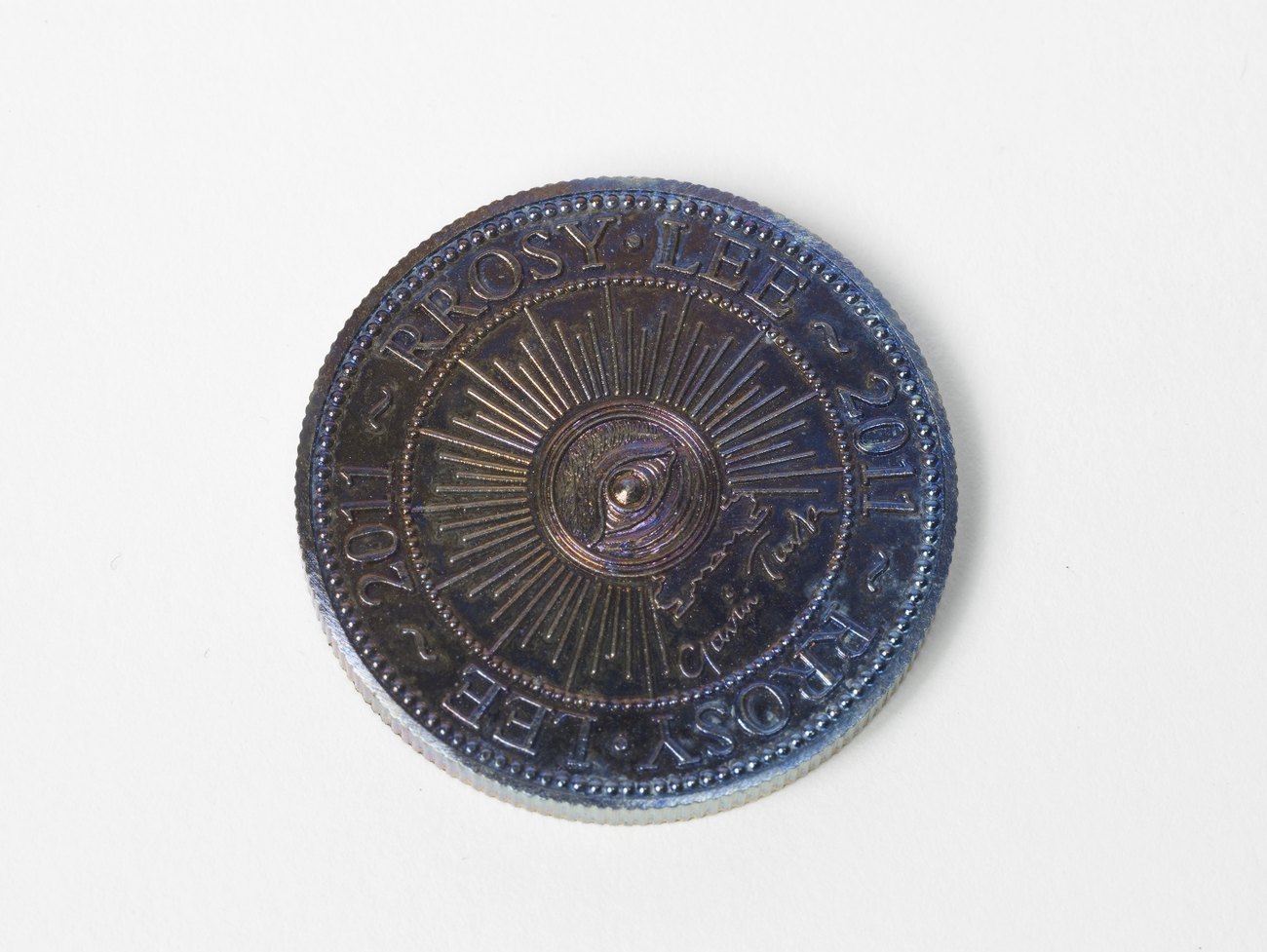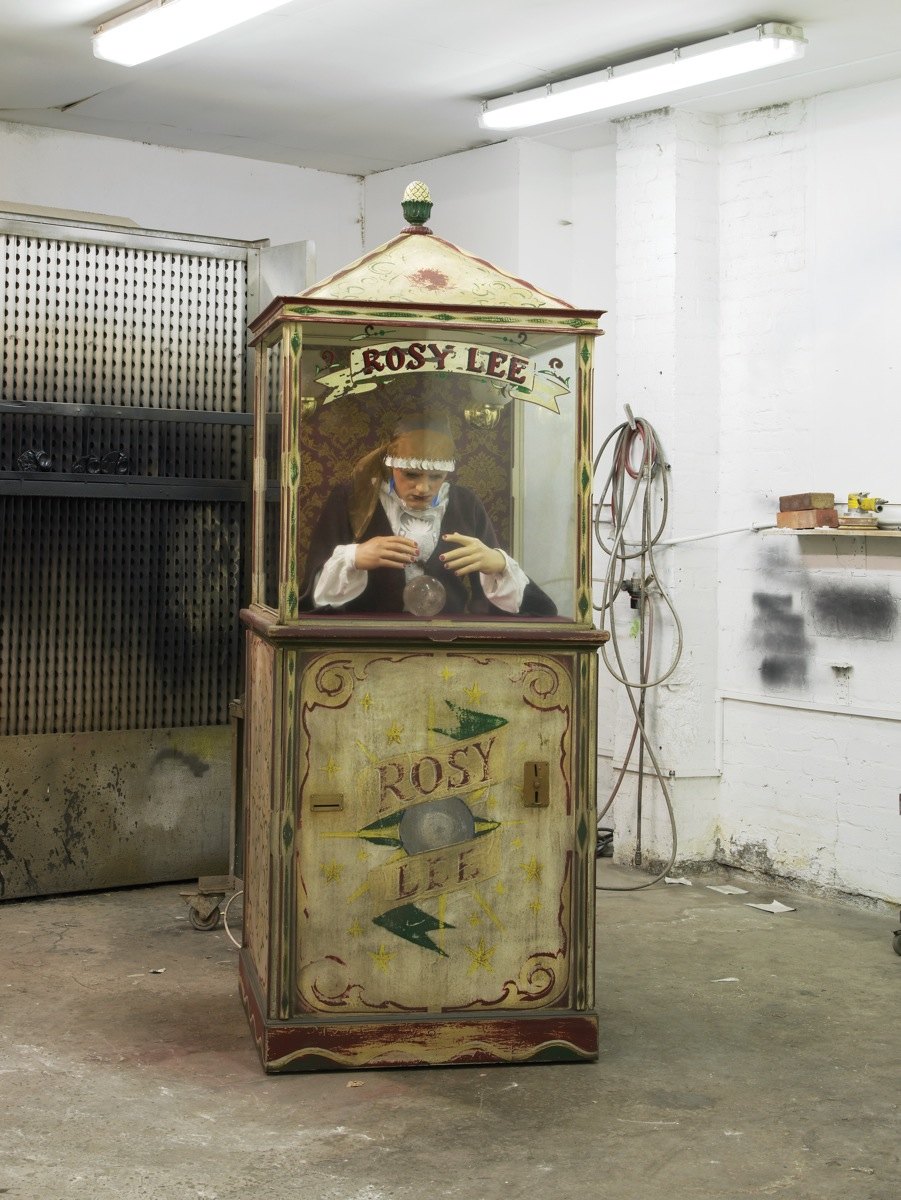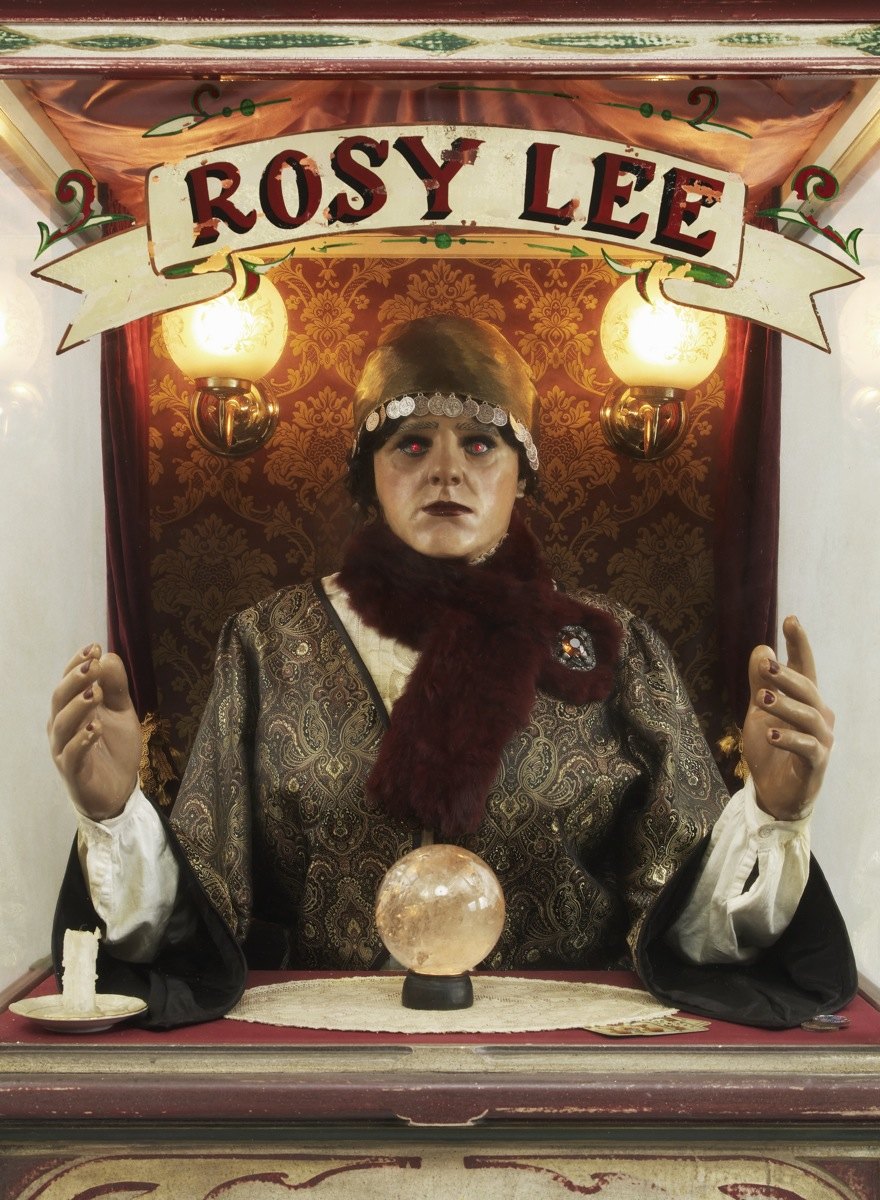Artworks2014Rosy Lee





Rosy Lee
Mechanical Sculpture
2380 x 860 x 830 mm
A mechanical sculpture in the form of a fortune-telling Gypsy, Rosy Lee belongs to Turk’s investigation of mystic automatons, which all bear an uncanny likeness to himself. Along with the Joseph Conrad-esque sailor, Gentleman Jim and The Mechanical Turk - based on the automaton chess player who beat the aristocracy at games in courts across Europe (all of whom were oblivious to the real person hidden inside) during the late 18th century - the sooth-saying foreigner Rosy Lee belongs to the margins of society– the circus and the seaside amusement arcade - where she occupies a liminal space that is neither inside nor out. Cockney rhyming slang for a-cup-of-tea, Rosy Lee is also a nod to Turk’s interest in tea and its relation to cultural trade, working class Britishness and of course the tradition of reading tea leaves. While Rosy Lee is also art rhyming slang for Rrose Selavy, the drag name of Duchamp’s female alter ego, an allusion to art’s ability to alter perception and its parallels with the fortune teller’s mysterious powers to do the same. So Rosie Lee will tell the fortune of anyone who places a coin in the slot of her booth, which contains the gypsy herself, a crystal ball and a spent candle. Once the payment has been accepted, Rosy Lee will become animated and raise her head to regard the fortune seeker. Looking into the crystal ball, her eyes will glow red and her hands open. Once she has “received” the person’s fortune, her head will drop - a sign her job has been done. But all is not over. A fortune card will then be delivered from the booth.